The second installment of my journey through waders past and present. Today I look at plovers: ones that used to be called plovers and now are lapwings, and ones that used to be called plovers and still are, and dotterels, some of which are also referred to as plovers and some of which aren’t. Almost as confusing as a BoJo or ScoMo briefing about social distancing during covid-19.
021 Northern Lapwing Vanellus vanellus
Slightly shameful to discover this blurry mess of an early digicoping effort is just about the best image I have of Northern Lapwing. Lapwing was one of the first birds I ever ticked off in the UK because it was common on Port Meadow, where I lived for four years from 1994-1998, and where this image was taken, though it’s actually taken as I was twitching a Lesser Yellowlegs some years later. I also recall seeing large numbers on Otmoor in the days before it became an RSPB reserve and I would trudge out to “The Pill” across the firing range looking for Jack Snipe (I only ever saw one), Short-eared Owls and Hen Harriers.

022 Spur-winged Lapwing Vanellus spinosus
In 2004, soon after Louisa was born, we visited Nikki’s sister and her family who were based at RAF Akrotiri in Cyprus. It was March so the start of prime migration in the Med’, and I nipped out early several mornings for some birding. This was back in digiscoping days so pretty piss-poor image quality, but one morning I found this Spur-winged Plover (and some Slender-billed Gulls, Marsh Sandpipers and other nice birds) at Phassouri Reedbed, a well-known hotspot near the airbase. Other great birds seen on that trip included Pallid Harrier (seen on the airbase itself), Black Francolin and one morning there was a fall of warblers just outside the base, with several Sardinian Warblers, but best of all my first (and still only) Ruppell’s Warbler!
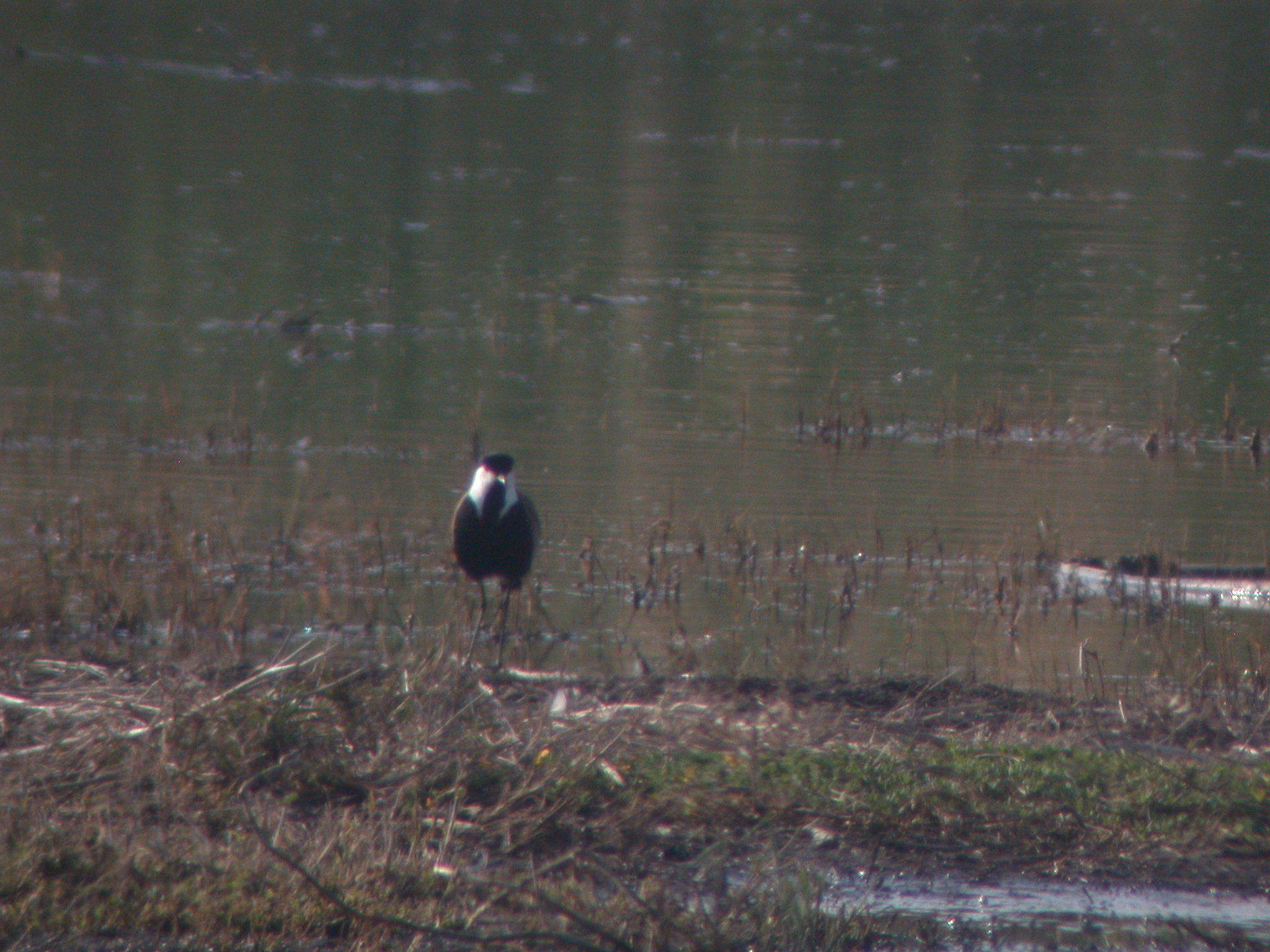
023 Grey-headed Lapwing Vanellus cinereus
Ticked off on my Beijing conference trip in 2009 (see Ibisbill above) at a place called Wild Duck Lake (also Oriental Pratincole, Yellow and Cinnamon Bitterns and some other nice stuff seen at dusk), but this picture is from Thailand in 2014. It’s another mediocre digiscoped shot, this time using a Sony RX100 and custom-made 3D-printed adaptor. Steve and I had spent the day on the coast south-west of Bangkok and racked up nearly 40 wader species for the day. This was just about the last of the day, when we found a flock of 30 or more.
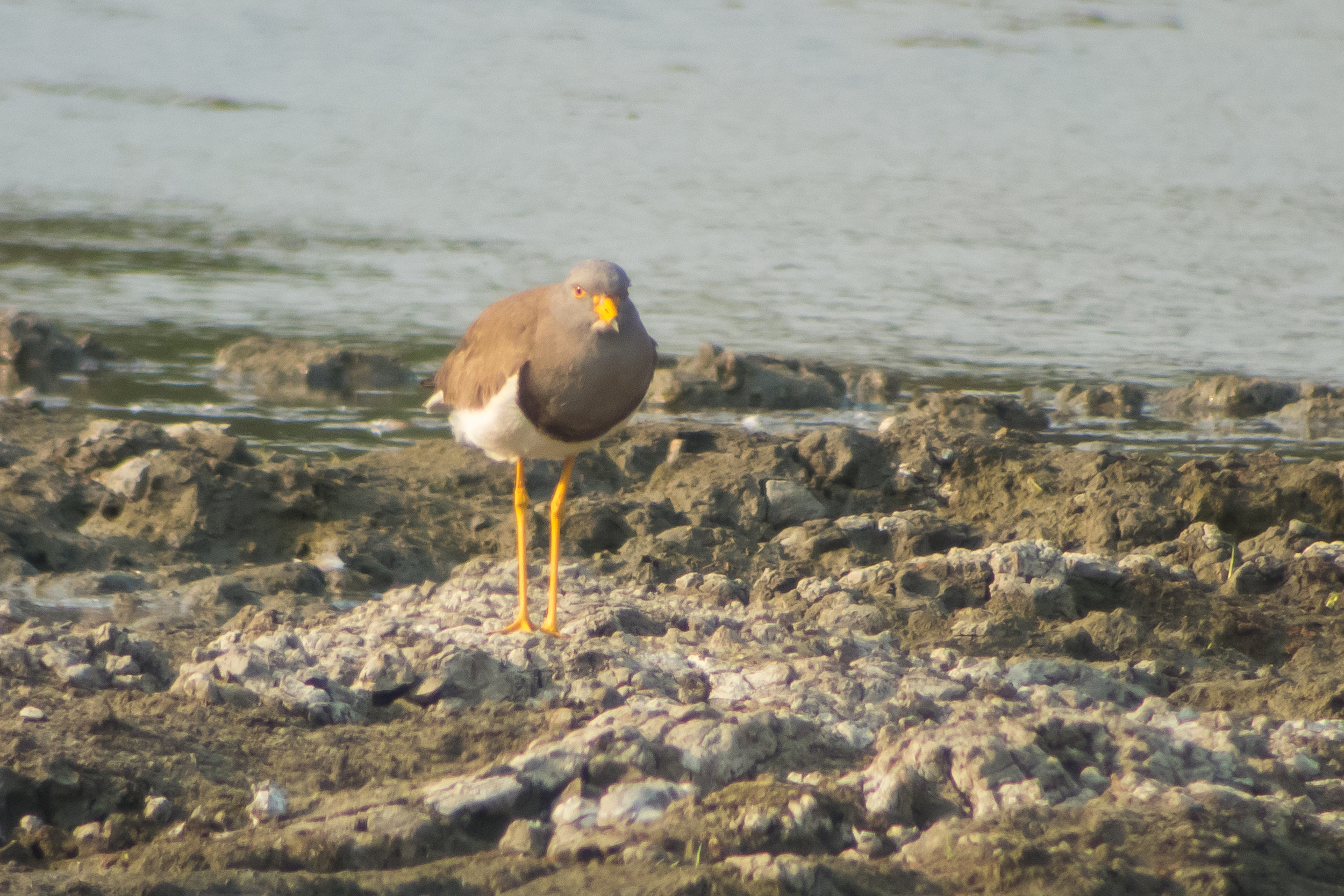
024 Red-wattled Lapwing Vanellus indicus
I am not sure exactly when I ticked off Red-wattled Lapwing, which is pretty common in Asia and the middle east (maybe on a Dubai stopover in 2009?), but this record shot is from Thailand in 2010 at the King’s Project.
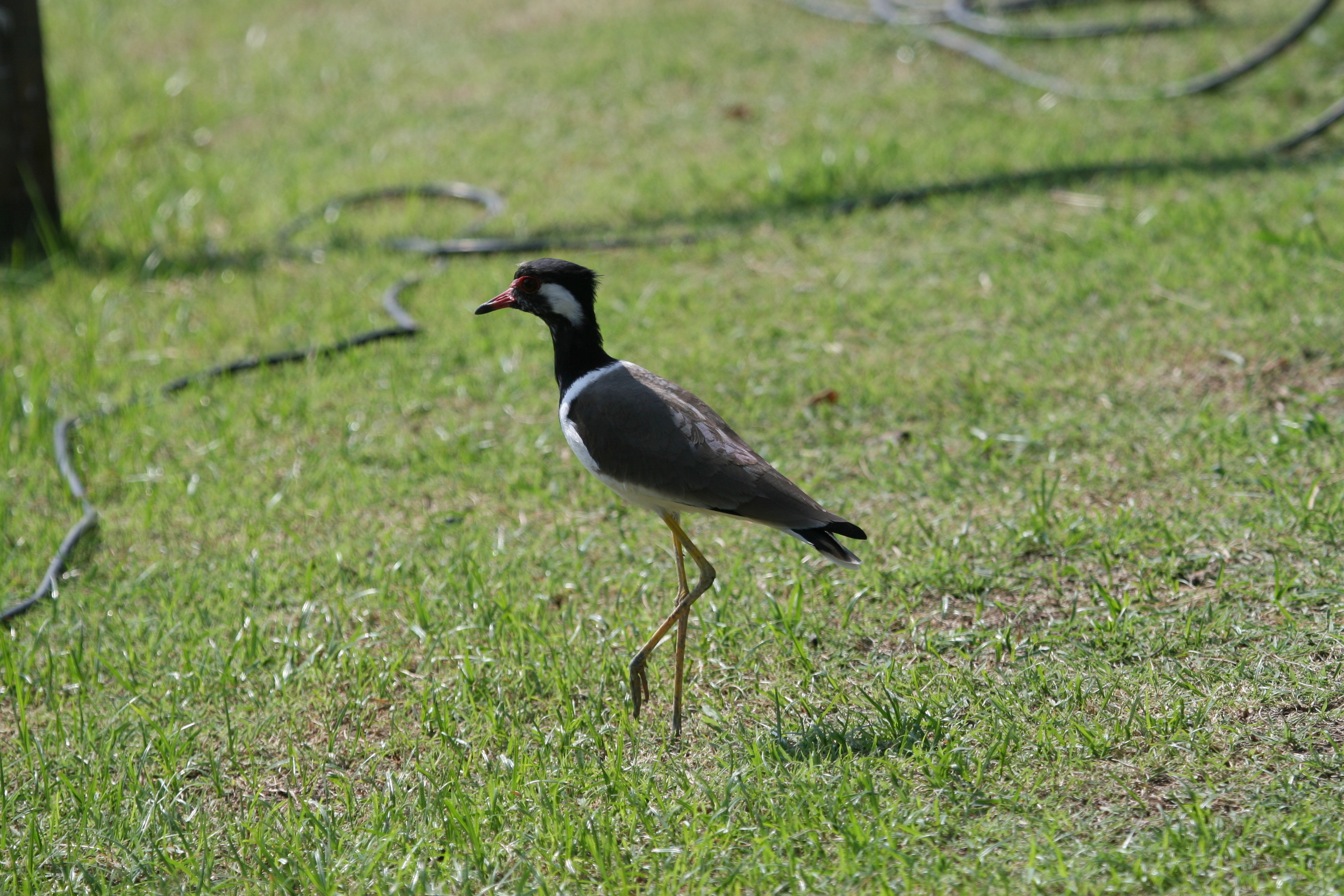
025 Banded Lapwing Vanellus tricolor
This is the less common of the two Australian lapwing species. I had probably seen this around Perth in the 90s, but I formally ticked it off on an epic day on both sides of the Vic/NSW border in 2013, as I drove back from Sydney to Adelaide after a conference. This was the same day that I also racked up Black, Painted and Black-chinned Honeyeaters, and Mitchell Johnson ripped apart the Pommie batting at the Adelaide Oval (I was listening to ABC Grandstand on the tranny 😉 as I drove from Chiltern to Deniliquin). I also saw 4 other epic Australian waders that day/night that put the Banded Lapwing in the shade. The photo is from near Hamley Bridge on the Adelaide Plains about an hour north of home. They are not common there, but on this occasion I found a flock of a dozen or so as I cruised the unsealed tracks looking for raptors.
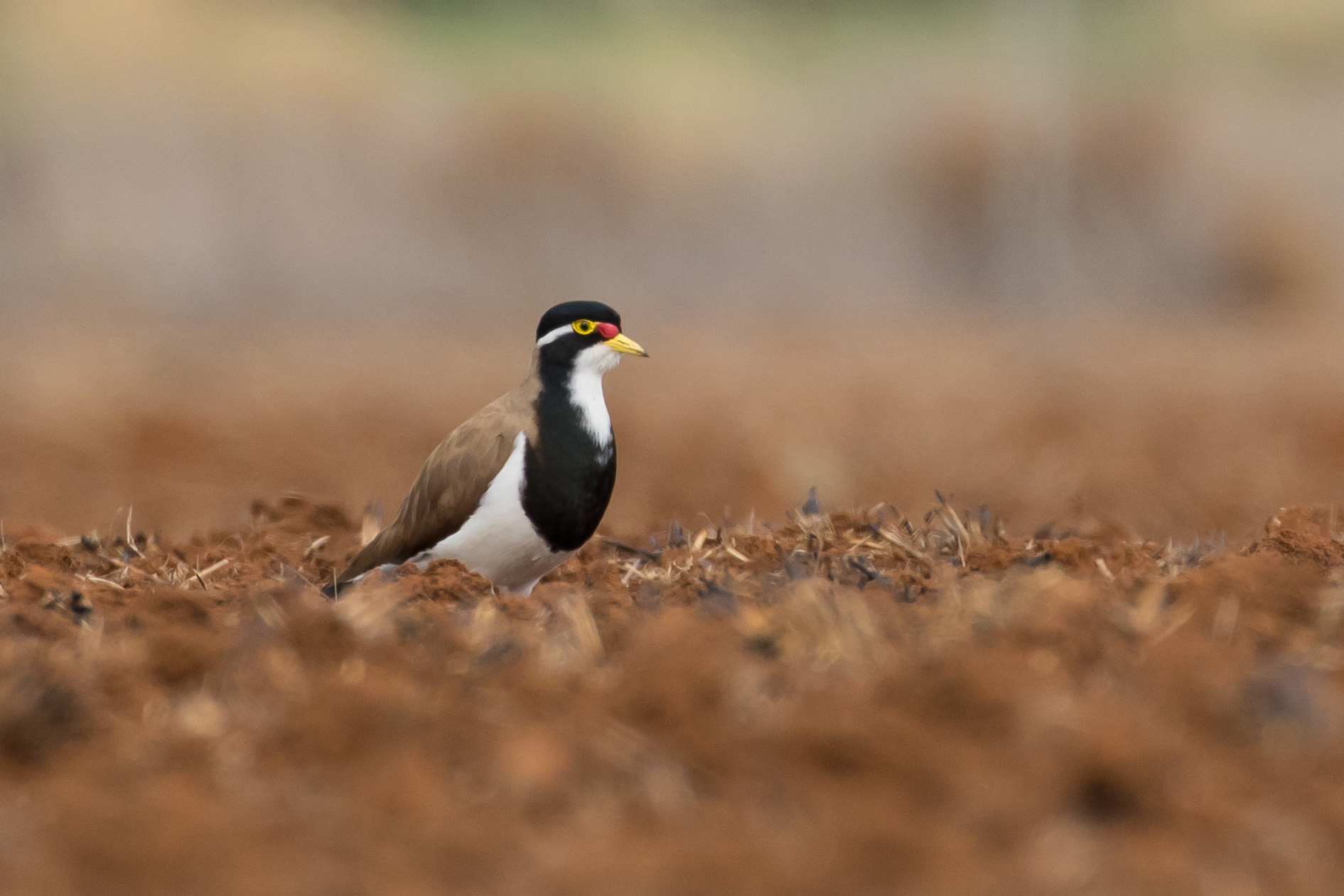
026 Masked Lapwing Vanellus miles
Just about the only wader common in urban areas, I see Wattled Lapwings regularly on my cycle to work in the parklands that surround the Adelaide CBD. That probably explains why I have no decent images. This pic was taken at Kioloa (see Sooty Oyc above ad Hooded Plover below) where I was visiting for the annual Robotic Vision Summer School (2017 edition).
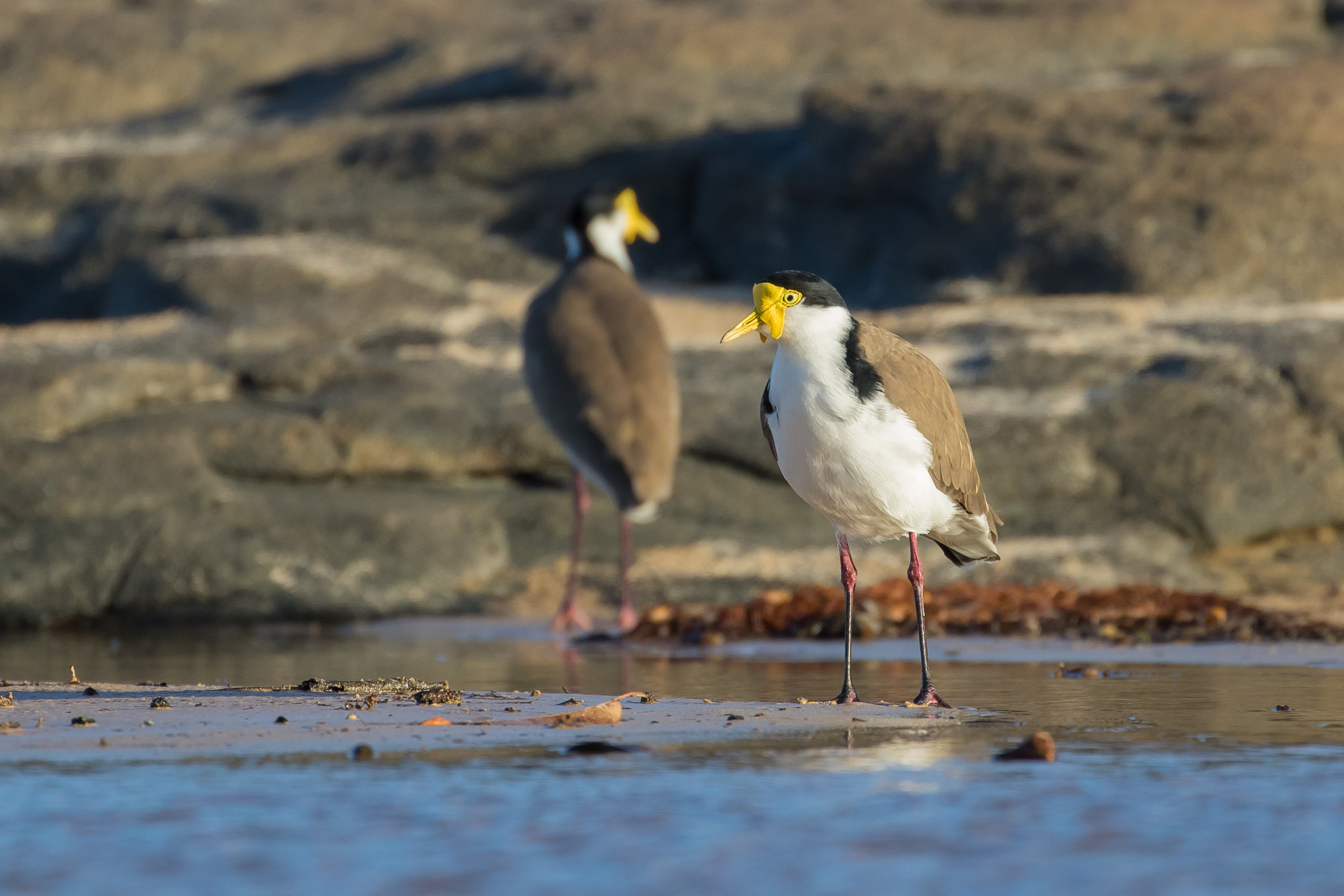
027 Sociable Lapwing Vanellus gregarius
One of the best birds of 2005 was the Rainham Marsh Sociable Plover. I twitched it alone but bumped into a bunch of Oxon birders there including Phil Barnett, and followed them on into Kent where we also ticked off Ferruginous Duck. It was distant, and really only viewable through a scope. I also took a video-camera (we had one for a while when the girls were young before digital still cameras could also take short videos). The zoom on it was quite powerful, but the images were old Standard Def so this frame-grab is very low res. Great bird, and endangered from hunting and habitat loss. A couple of weeks later I went back to Rainham for Penduline Tit!
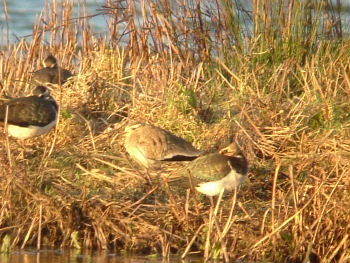
028 White-tailed Lapwing Vanellus leucurus
In June 2007 this mega-rarity in Britain showed up at Caerlaverock in Dumfries and Galloway. For me this was beyond twitching distance, but when it reappeared a week later at Leighton Moss, one of the marquee RSPB reserves that I had never visited, the calculation of 3 and a half hours up the M6 on a Sunday afternoon tipped in my favour. Once I’d arrived it took a long time to find, but eventually I got a view of the bird distantly down a narrow channel through the reeds. Enough to tick it off, but not a hugely satisfying experience with the bird, even if Leighton Moss was a beautiful place to visit on a glorious summer day. Six years later we were living in Adelaide, and I visited Dubai on a cheeky jet-lag-fixing stopover, en-route to Oxford for the ICCV Area Chair meeting. I had cracking view of several WTL at the pivot-fields not far from Dubai airport, and this image is one of them. Oh, and WTL was one of my two contributions to the #birdthefeckathome Facebook group that inspired my current blog posts
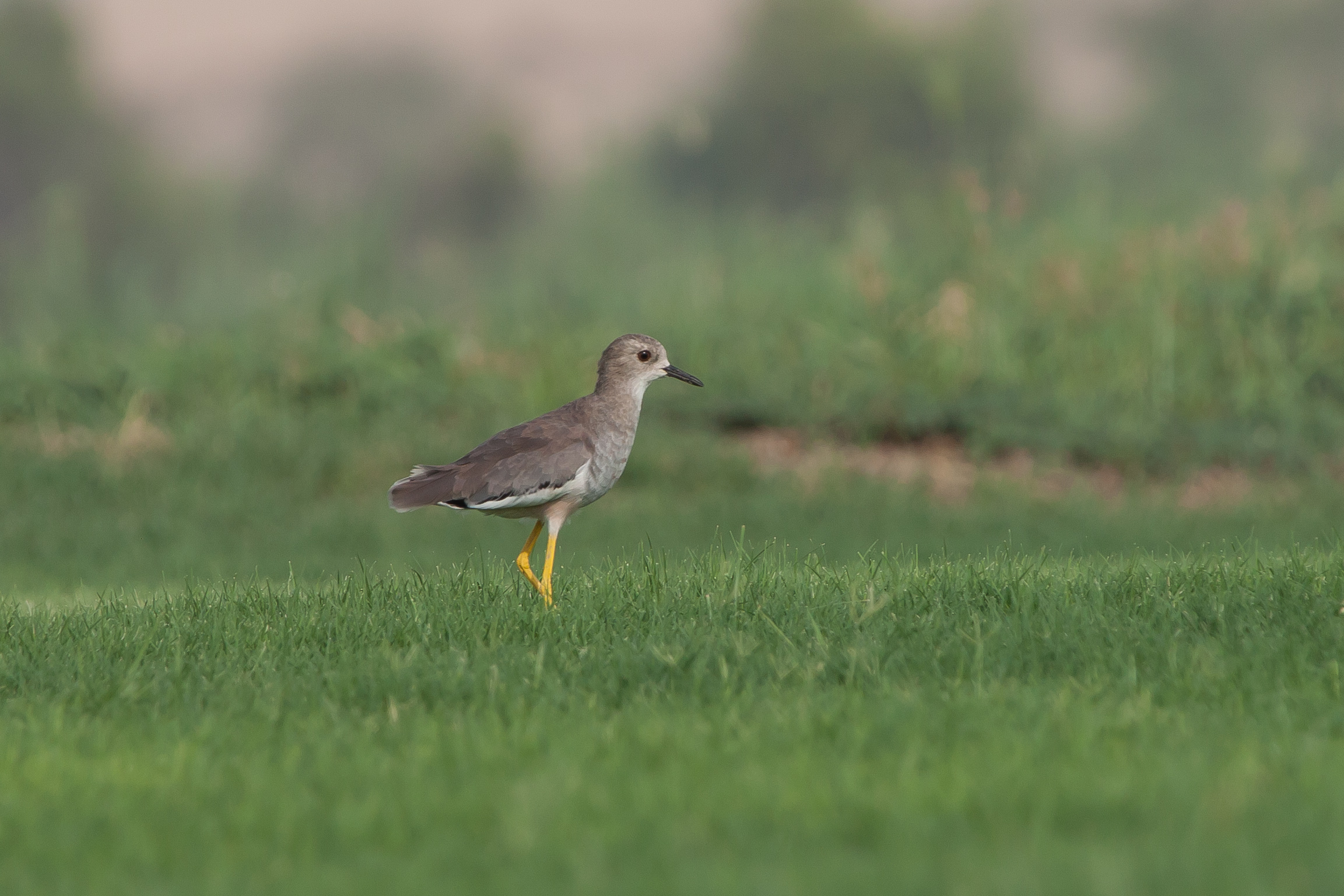
029 Southern Lapwing Vanellus chilensis
Southern Lapwing was another conference tick. The year was 2007 and I was at the International Conference on Computer Vision in Rio de Janeiro (the life of an academic is tough!). I’d flown in a couple of days early and birded at REGUA, a reforestation project in the Serra Dos Organs mountains north-west of Rio. This was my first South American birding and my mind was well-and-truly blown by two days of regular lifers, including several lifer families (trogons, mannikins, hummingbirds, jacobins, puffbirds, toucans, tanagers, etc) and unlimited caipirinhas in the evening! My Southern Lapwing lifer came when I was back in Rio at the conference, and during lunch I took a walk with colleagues around the fort at the tip of Copacobana Beach. Magnificent Frigatebirds and Brown Boobies cruised the beach (yes, there were jokes about Brown Boobies on Copacobana beach) and I found a Southern Lapwing on the lawns below the fort. My only image was a sneaky one with my pocket compact camera (Fuji F31fd) because cameras/optics were not allowed. So this image is from Chile (same conference, 8 years later back in South America – I told you the life of an academic is tough) from the Yeso Valley, while chasing another special wader.
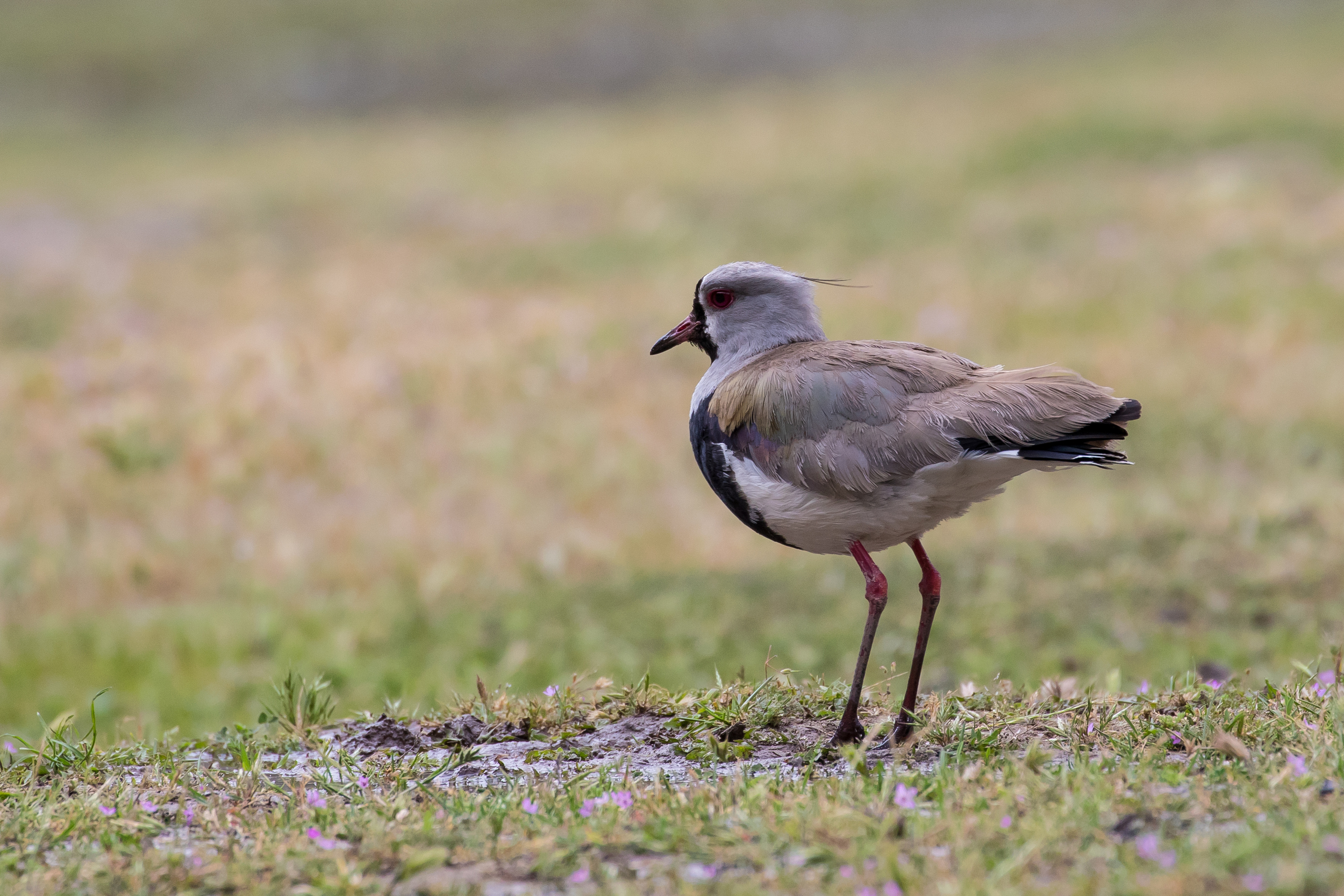
030 Red-kneed Dotterel Erythrogonys cinctus
I have no recollection of seeing Red-kneed Dotterel before moving to SA, so I ticked it on on my first ever visit to Laratinga Wetlands. Laratinga is one of the best wetland birding sites close to Adelaide. It’s about 25 minutes up the SE Freeway to Mt Barker, and remarkably, is a mad-made project associated with the sewage treatment plant. Water from the settling ponds is released through a series of lakes and necks, a bit like an intestine, for further filtration. It is magnet for waterfowl and crakes, as well as Australian Reed-warblers and Little Grassbird. The two commonest waders are Red-kneed and Black-fronted Dotterel, but in summer it is also usually home to one or two secretive Latham’s Snipe. But I have a confession: though I have tried to get a really good image of RND at Laratinga, my best are all from Tolderol, another superb fresh-water reed-bed and wader site near Adelaide.

031 Inland Dotterel Peltohyas australis
One of the star waders of Australia, Inland Dotterel, as the name suggests is found (or not, if you are neither lucky nor skilled enough) in the arid interior of Australia. It was one of the 4 stellar waders I saw on one of the my best-ever days birding in Australia. On the plains north of Deniliquin, we encountered several of these beautiful, cryptic waders on the Hay Plain in the late afternoon light, and again while spotlighting.
In 2016 Paul Coddington and I planned a trip up the Strzlecki Track. We braved the damp Lyndhurst airstrip at night (following a tip off from Steve Potter), avoided becoming bogged, and found a couple in the headlights of the Kluger. But even more overnight rain closed the Strzlecki and we were forced to abort the rest of our northern outback trip, instead heading for Eyre Peninsula. A year later in spring 2017 we made another trip north and bombed up the Birdsville Track almost as far as the Qld border. On a side track north of Mungerannie roadhouse, movement by the side of the road caught our attention and I screeched to a halt. A dozen gorgeous dotterel scuttled out onto the gibber. With careful stalking, and grazed knees and elbows from the sharp, unforgiving gibber, I was able to get reasonable close and fire off a few keeper shots.

032 Wrybill Anarhynchus frontalis
I really jammed in as much birding in as many sites as possible in a very short space of time in NZ in 2010. After my Homer Tunnel jaunt on day one, Black Stilt after the conf, I then had two short pelagics planned at Kaikoura. The second of these finished early afternoon, at which point I jumped in the hire car and headed for Christchurch Airport in time for a flight to Auckland to visit Nikki’s sister (same one who was in Cyprus, now emigrated to NZ). I made good time as planned, so I worked out I had 20 minutes for more birding on the way. A super quick detour to the Ashley River estuary led me down some tracks to within a few hundred metres of the estuary. I didn’t fancy lugging the scope and other optics while running, so I took only bins with me and legged it the water’s edge. On the far bank of the river I could make out a few small waders scuttling about, but it was only after watching them for a bit that I realised they had the diagnostic breast band of this special wader. On realising my initial oversight, I looked more carefully and could just make out the unique curve to the bill – always to the bird’s right! I looked at my watch – did I have time to run back to the car and come back with either camera or digiscoping kit. Sadly no. I ran back to the car, drove on the limit to the airport and arrived in the nick of time for my flight to Auckland – a photo would have caused me to miss it.
033 European Golden Plover Pluvialis apricaria
A shameful omission from my gallery. My first ever local patch was Port Meadow and we lived at top of the meadow for 4 years in the 90s. I walked regularly across the meadow. In winter waders and waterfowl would congregate on the flood, and usually there were at wintering Golden Plover on the fringes of the flood, along with 100s Lapwing, Dunlin, Redshank and occasionally rarer stuff like Black’wits, Ruff and even once, a Lesser Yellowlegs.
034 Pacific Golden Plover Pluvialis fulva
The eastern counterpart of EGP, this one I do have images! Now that I look back through records, my first was in fact o the airstrip at Manus in 2008. But it is a regular summer visitor to various spots around Adelaide. This image is from my first trip to Bangkok and the salt-flats a few hours south-west of the city at Pak Thale and Laem Pak Bia.
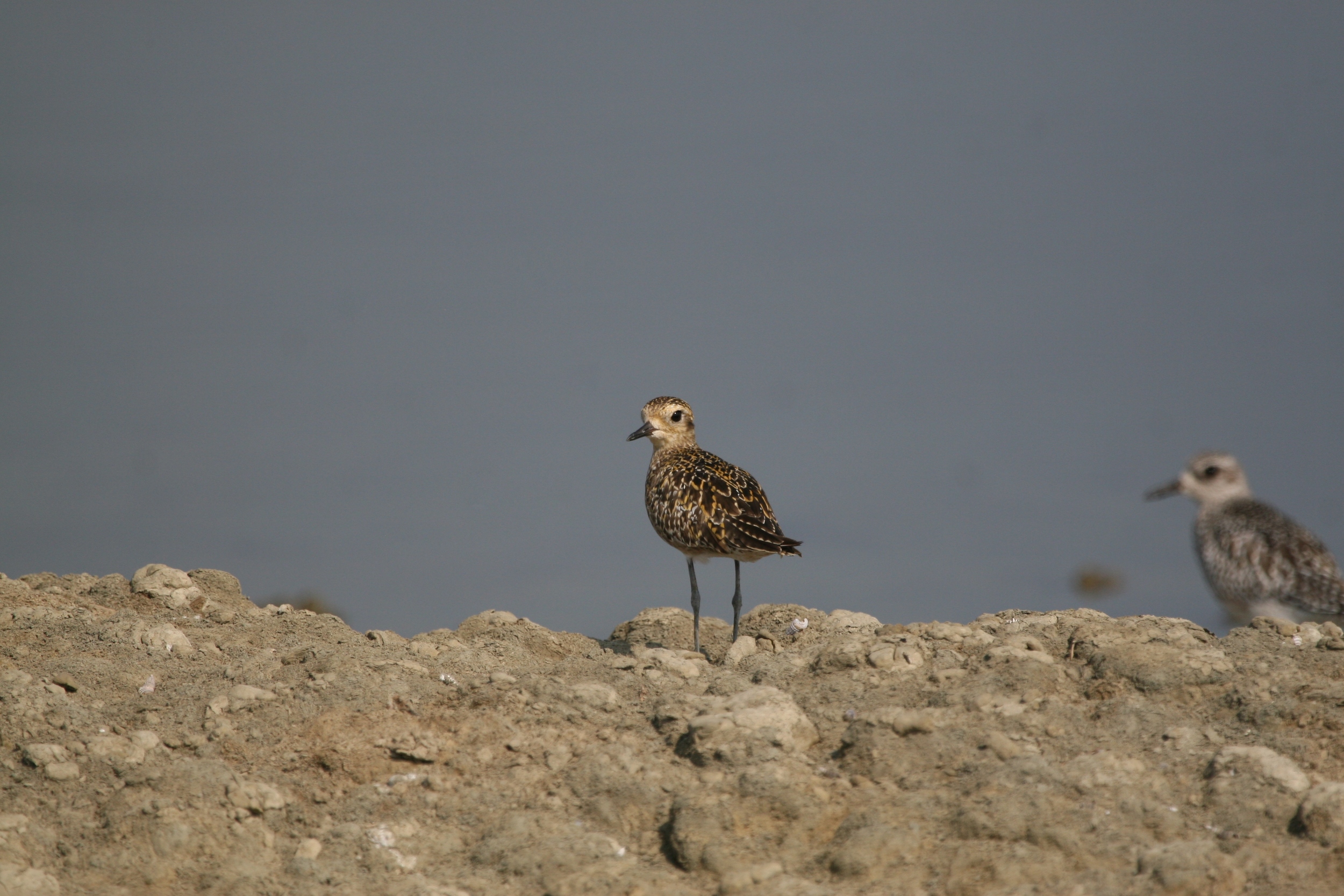
035 Grey Plover
My first Grey Plovers were at a rich site on the banks of the Swan Estuary. Alfred Cove is tucked away in suburbia, buffered from the mostly-oblivious human population by a thin strip of park, it is a magnet for waders and rails because it is sheltered from both easterlies and westerlies that batter most parts of the river at various times of day. Back in the 70s I was one of the oblivious people – I went to YMCA and played hockey at Tompkins Park right around the corner, so I was two or three times a week. As a boy a remember seeing Dennis Lillee regularly in the nets and I got his autograph there one evening. But I digress! Along with the Grey Plover I ticked off Bar-tailed Godwit, Stilts, Red-necked Stint and Curlew Sandpipers. This image is from Bald Hill Beach, another picture in the dusk light at the end of my 2016 “Two Grasswren Tour”.
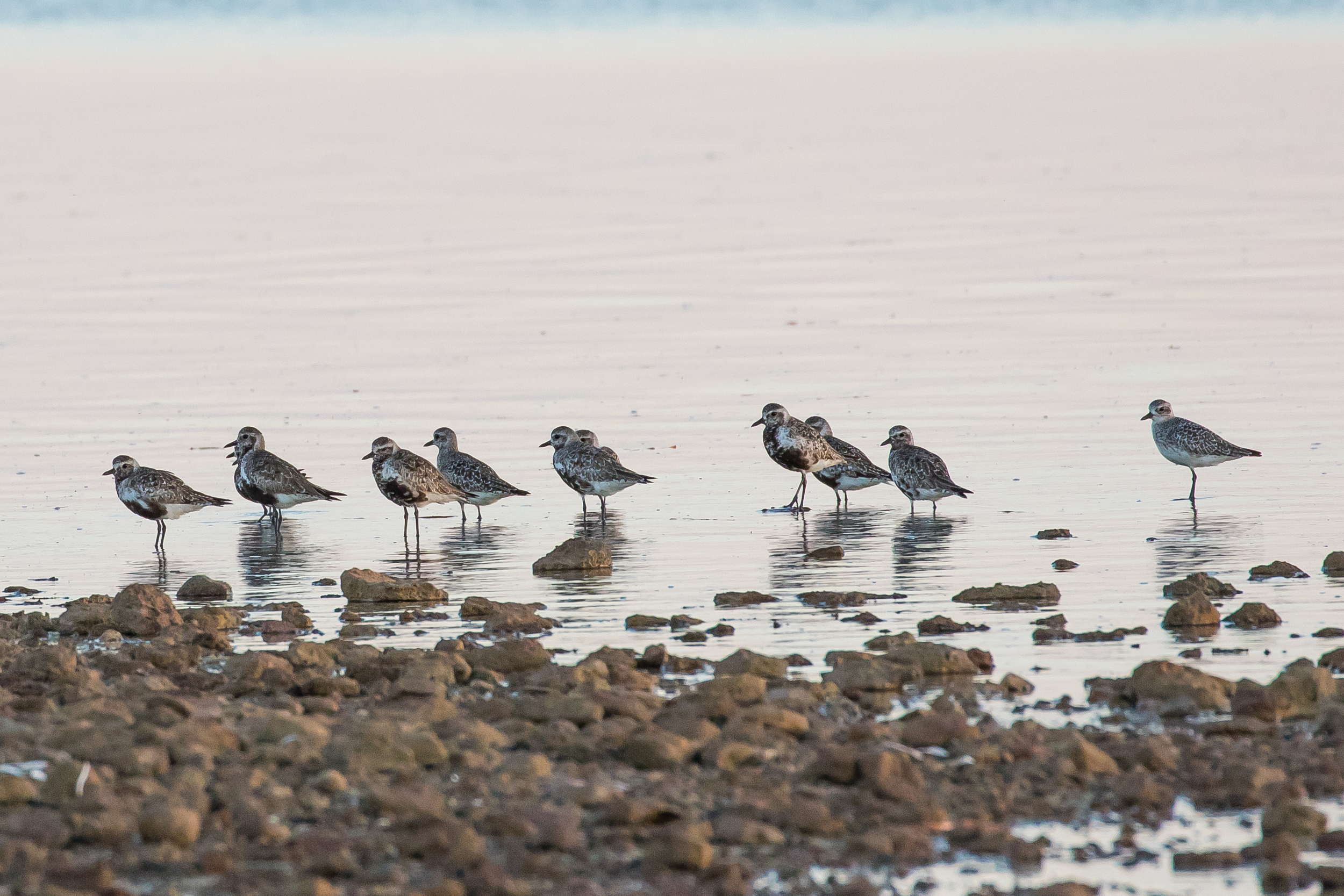
036 NZ Dotterel Charadrius obscurus
One of my two days in Auckland was devoted to birding. I spent the day with Quentin Paynter on Tiritri Matangi, a predator free sanctuary island in the Hauraki Gulf. We found most of what the island has to offer, though sadly not Little Kiwi which typically needs an overnight stay. After returning to the mainland Quentin took me north to a stunning beach where he expected, and we found, this gorgeous fella to round off a stellar trip, especially for rare waders.
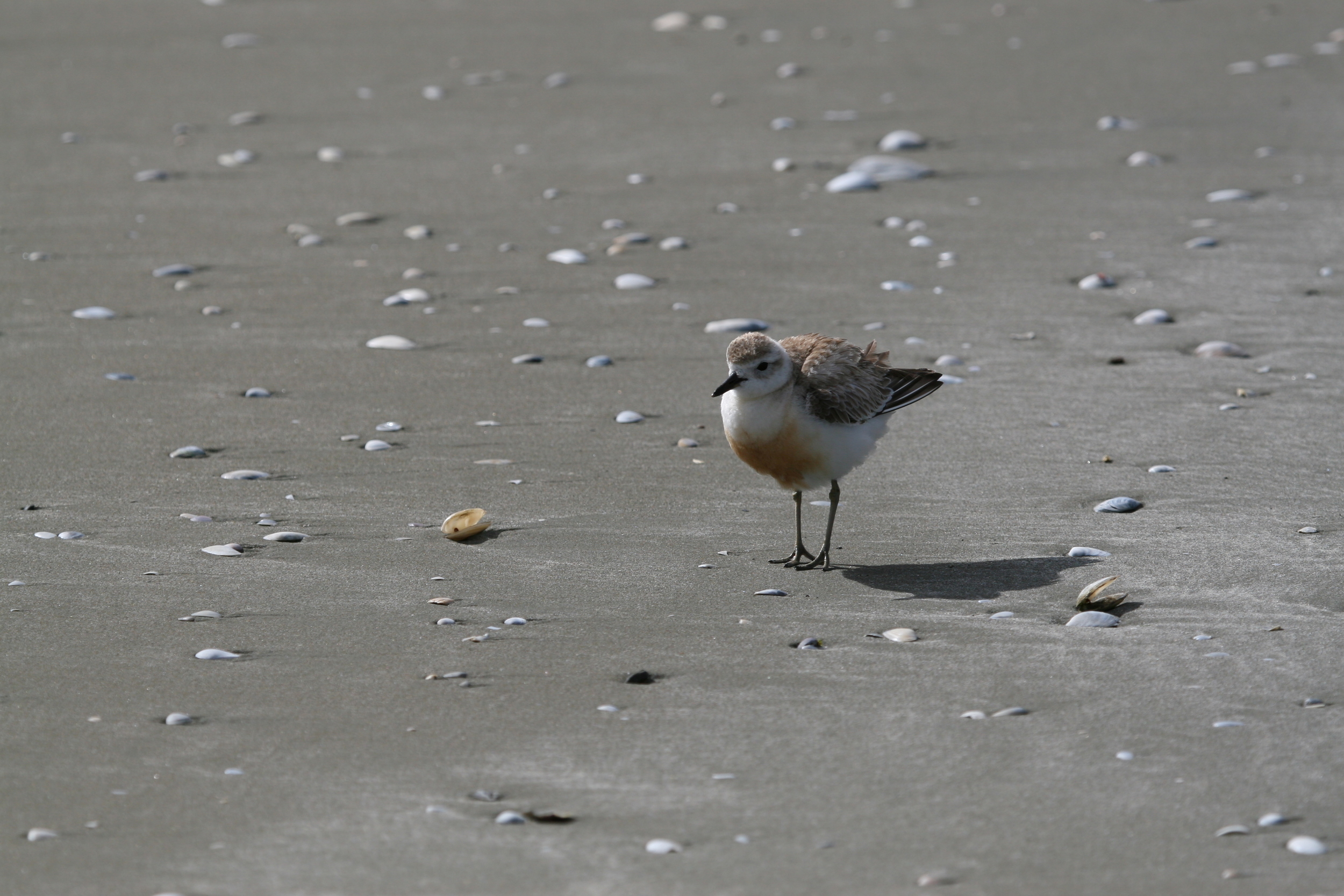
037 Common Ringed Plover Charadrius hiaticula
Another bird that I saw fairly often, most usually near the coast, in my UK days but never got (or tried) for a decent photo because I had seen loads before I started taking any pictures. This blurry digiscoped shot from the Llobregat Delta is the only image of CRP I could find while hard-drive surfing. I have visited the small wetland just south of Bareclona Airport many times because travelled there for work regularly in the 90s and 00s. Amazingly I have still never visited/seen the Sagrada Familia.
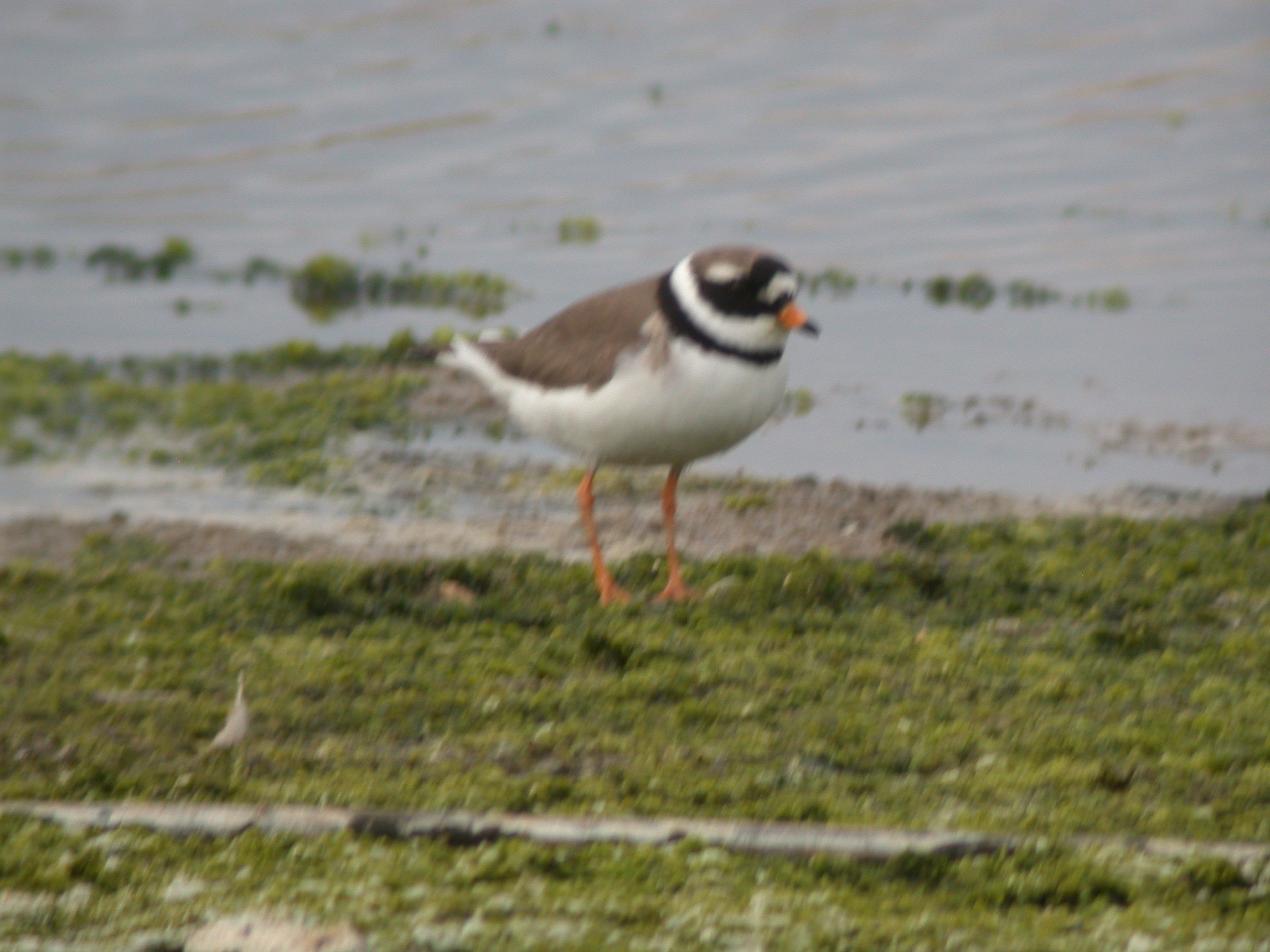
038 Semi-palmated Plover Charadrius semipalmatus
This might be the oldest photo in the gallery. It was taken in 2000 on the Texas coast where Nikki and I visited friends on a stopover en route to the International Conference on Robotics and Automation (in San Francisco) using my Canon A1 and a 400mm mirror lens. I had previously dipped on the Dawlish Warren bird (1997). When it first appeared there was quite a big twitch, but I didn’t make a spcila trip, waiting until we were visiting the Youngs for the weekend. Steve and I trudged out to the beach side of the point and saw hundreds of CRP, be neither we nor the several other “late” twitchers could locate the Semi-P.
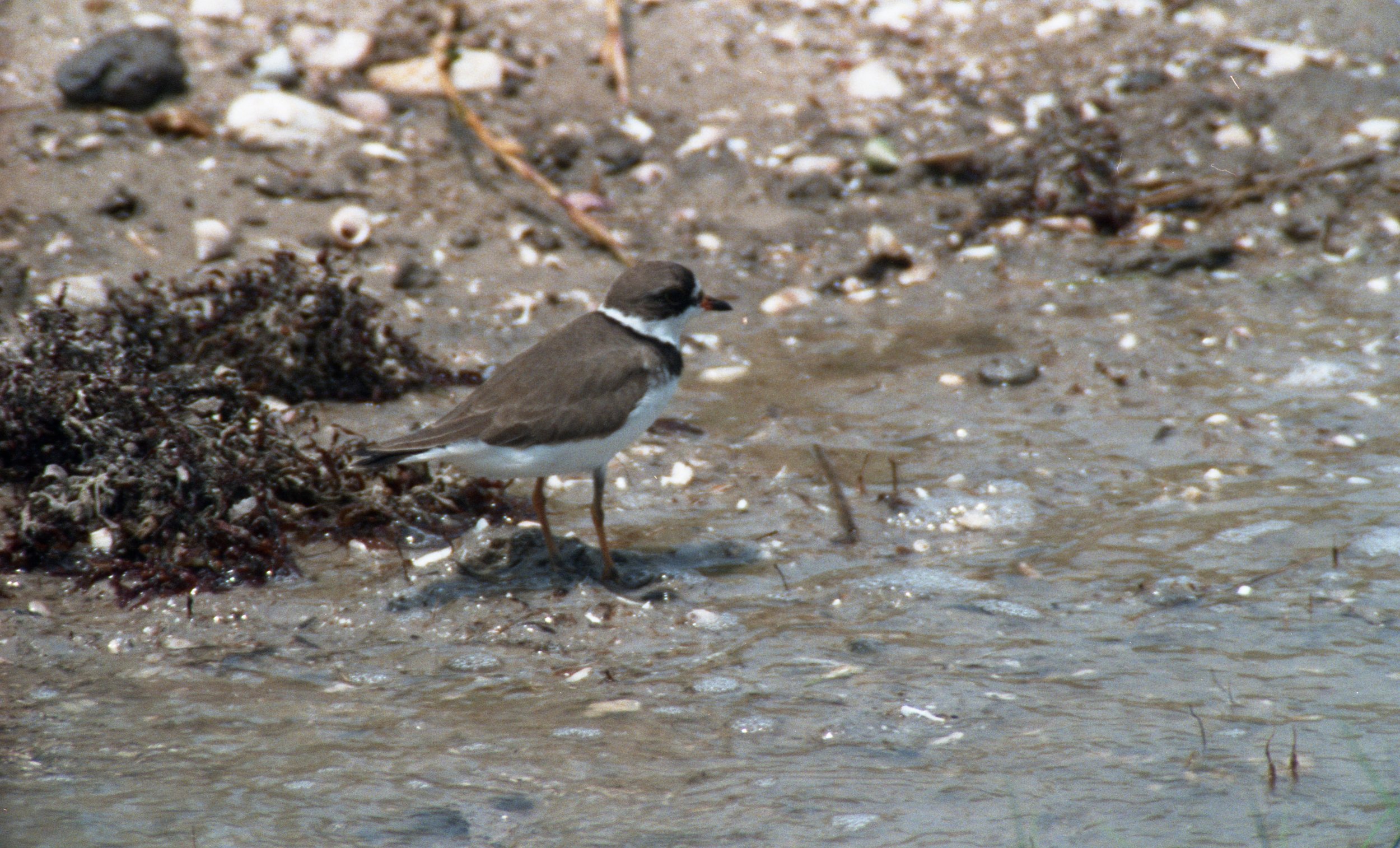
039 Long-billed Plover Charadrius placidus
This is the only image in the gallery that I did not take myself. It’s actually a picture taken by Tom Bedford, who was standing right text to me when he took it; I was either viewing through scope, or trying (unsuccessfully) to digiscope. I certainly have no pictures from this point in the trip, so if I was digiscoping the end-product was so bad that I deleted them. But what trip, you ask? As a 50th birthday present to myself I decided on a 2-and-a-bit week trip around Sichuan, an area rich in high quality families like Galliforms (gamebirds), Parrotbills, Laughingthrushes, Robins/Chats, Rosefinches, and a host of other desirable species. The Long-billed Plover site was in Dujiangyan, the home town of our guide, Roland. They nest on these pebbly braided rivers and are almost invisible. Tom picked up a bird as it scuttled quickly from left to right, but when it stopped and crouched down (presumably on its nest), it was almost invisible. See if you can find it in the picture!

040 Little Ringed Plover Charadrius dubius
There are some poor omissions from my “photographed” list, and this is one of them. I couldn’t even find a record shot in the archives. When we lived in Cumnor, Farmoor Reservoir was my local patch and LRPs breed on the scrapes between the ressie and the Thames, viewable from Pinkhill Hide where I spent many an enjoyable hour after the walk over the causeway.
041 Killdeer Charadrius vociferus
My first – or at least the first I remember – was in 2005 when I visited colleagues at GE Research Labs in Schenectady. I was there for two weeks and one of the days of the weekend I headed off alone in my rental car up the Hudson River. I must’ve had a tip-off about some generically nice places to bird, but I have no recollection of why I went there in particular. I do remember finding Ring-billed Gulls aplenty, a Belted Kingfisher, and various waders that were at the time lifers, including Lesser Yellowlegs, Spotted Sandpiper, and Killdeer. The nicest encounter I had was in the Pawnee National Grasslands of Colorado; another post-conference day trip. A pair of confiding birds was running around on the road edge but the best image I obtained was the one below – pretty mediocre. I was too busy looking for Longspurs and photographing the sparrows and larks that are abundant on the endangered grasslands. That day I connected with both McCown’s and Chestnut-collared Longspur (see Colorado 2010) as well another cracker from this list, Mountain Plover (see below)

042 Piping Plover Charadrius melodus
At the end of this list I’ll do a count of how many of these birds are “conference ticks”. Of the birds that are neither in Australia nor the UK, I have a feeling it will be a pretty high percentage, and the species that I have never seen on a “conference birding trip” will be very much in the minority. Piping Plover came the day before the 2015 edition of Computer Vision and Pattern Recognition in Boston. I did my usual thing of grabbing a rental car and drove north to Plum Island where I spent a morning with Tom Wetmore, who is the local birder. First port of call to catch the light was the southern tip of the island where we had some magical times with several of these dainty and endangered waders, including some with chicks.
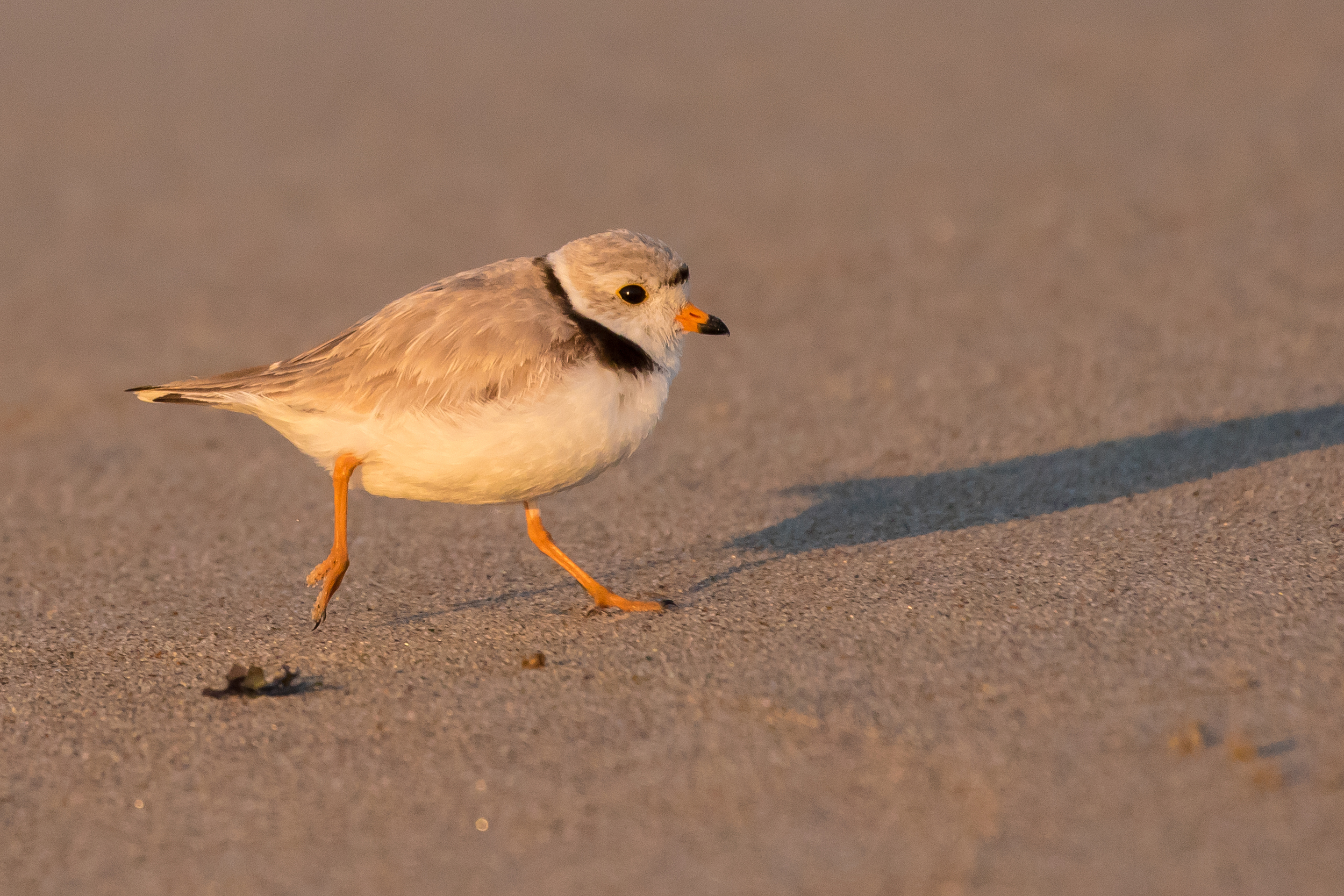
043 Kentish Plover Charadrius alexandrinus
Found only uncommonly in Kent, my first was on Lady’s Mile Beach near Akrotiri on our last day visiting Nikki’s sister in 2004. I had just also found a Greater Sand-plover (the actual reason I was on the beach), but managed better images of a confiding Kentish. At the time I thought these were great photos, but these days they would probably be binned. Though I have seen Kentish in a few places since, and even scored some better pics, I enjoyed the Cyprus experience so that’s the image I have chosen for the gallery.
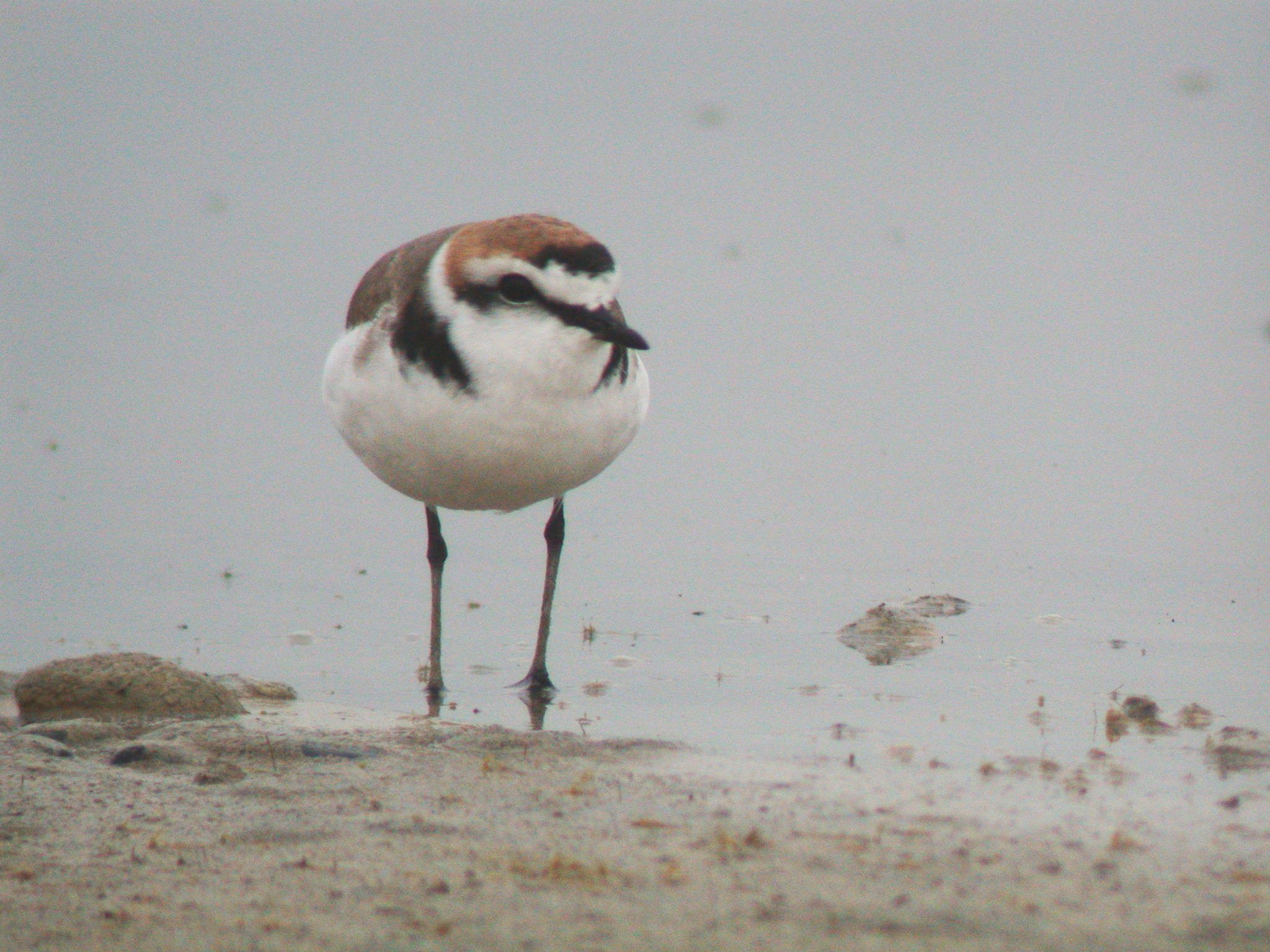
044 Snowy Plover Charadrius nivosus
I had not intended to go to the 2011 Face and Gesture Conference (in Santa Barbara), but with barely a week to go before the gig we realised my student’s visa was not going to arrive in time, so I would have to go to present our paper. The enforced travel meant the kitchen pass-out was easier to come by than usual, and I planned some birding around Santa Barbara and a bit further afield. The final afternoon of the conference I skived off and headed for the beach just north of the UCSB campus. The weather did not look great, and the omens were also not good when a local told me they’d not been seen for a while. But I scanned from above the beach in the drizzle and eventually found a couple of birds. The harder I looked, the more birds I could see until a jogger disturbed the flock. I took some flight shots in which I can count 80 birds. They settled back immediately to their favoured spot amongst pebbles just above the surf-line. As the rain started in earnest and threatened a downpour (I could see a wall of water immediately north and approaching) I moved down onto the beach. I got some closer photos but I prefer this image of several birds small-in-frame, well camouflaged amongst the pebbles. I would see more later in the trip at Salton Sea, a desolate spot but great for birding.
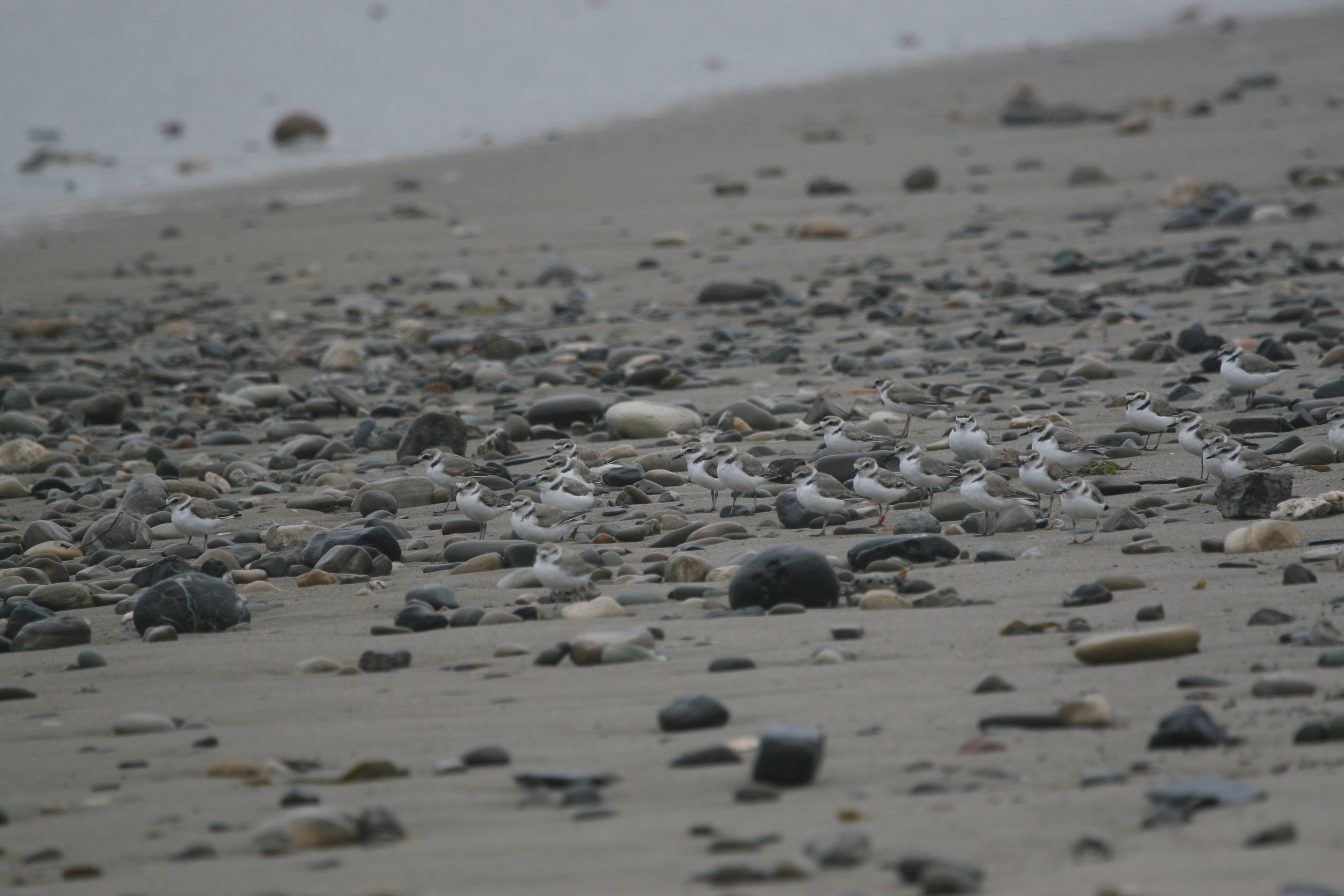
045 Red-capped Plover Charadrius ruficapillus
RCP is a common resident in many parts of Australia, including local to Adelaide. My first were in Perth in 1994, but this picture is from an early autumn evening on Hindmarsh Island, spent photographing Red-necked Stints and Red-capped Plovers. I also saw my first SA Rock Parrots that evening.

046 Malaysian Plover Charadrius peronii
In 2010 I visited the Philippines on a Birdtour Asia trip. One hot unconfortable morning and early afternoon was spent walking up and down a steep, narrow jungle trail on Palawan searching unsuccessfully for a Falcated Ground Babbler. By the time we arrived down onto one of the most pristine and beautiful beaches I have ever been on, I was sweating like a bastard, my clothes and skin were ripped from thorns and my hair matted with cobwebs. The leader set off immediately up the beach in search of Malaysian Plover, known to breed at this site. In a mutinous mood, I stripped off and legged it into the stunning, crystal clear, cooling water. This was just as refreshing as I had hoped, but I’d not really thought it through to its conclusion, and sheepishly had to make my way back to the group full-frontal. We dipped on Malaysian Plover to boot!
Later the same year I was travelling back from NZ to the UK and had a 24hr stopover in Bangkok (designed for another special wader). With my guide, we hired Mr Deng to take us out to the famous sandspit and scored several very smart Malaysian Plover and one “White-faced Plover”. I reprised the trip with Steve in 2014 so he too could tick off both Malaysian and WFP. We even had better views of the latter, though still no decent photos. The picture of Malaysian below is from the 2010 trip.
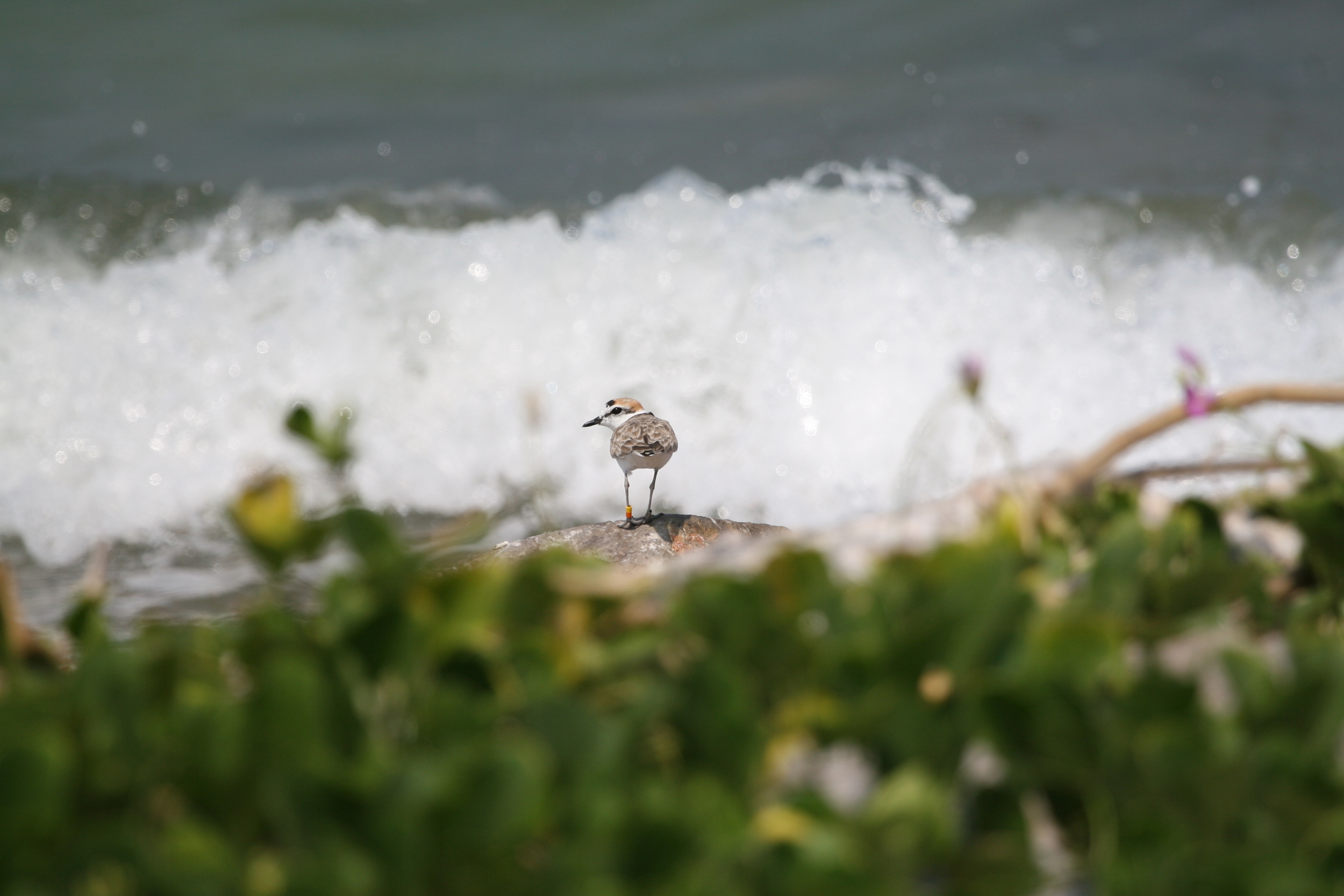
047 Collared Plover Charadrius collaris
Instead of boozing with colleagues which is the usual post-session activity at conferences, on my 2015 trip to Santiago I used the late evening light to visit local wetlands. I was searching for South-American Painted Snipe and I dipped, but I did flush numerous South American Snipe, and as I was leaving, came across this one plover. At the time it was unidentified until I reviewed the video I’d taken and realised it was a lifer Collared Plover. It was too dark for DSLR or digiscope photography, so the pic below is a screen-grab from the dgiscoped video.

048 Double-banded Plover Charadrius bicinctus
Double-banded Plover was another wader I ticked off on my NZ smash-and-grab trip. This bird pictured was one of several I found scuttling about near the braided River Tasman that flows into Lake Pukaki (where I was still searching for Black Stilt). It had certainly picked a photogenic spot, in the shadow of NZ’s highest peak Mt Cook, to call home. Double-banded Plovers breed in NZ but overwinter in southern Australia so I have now seen them – but in their duller winter garb – near Adelaide as well.
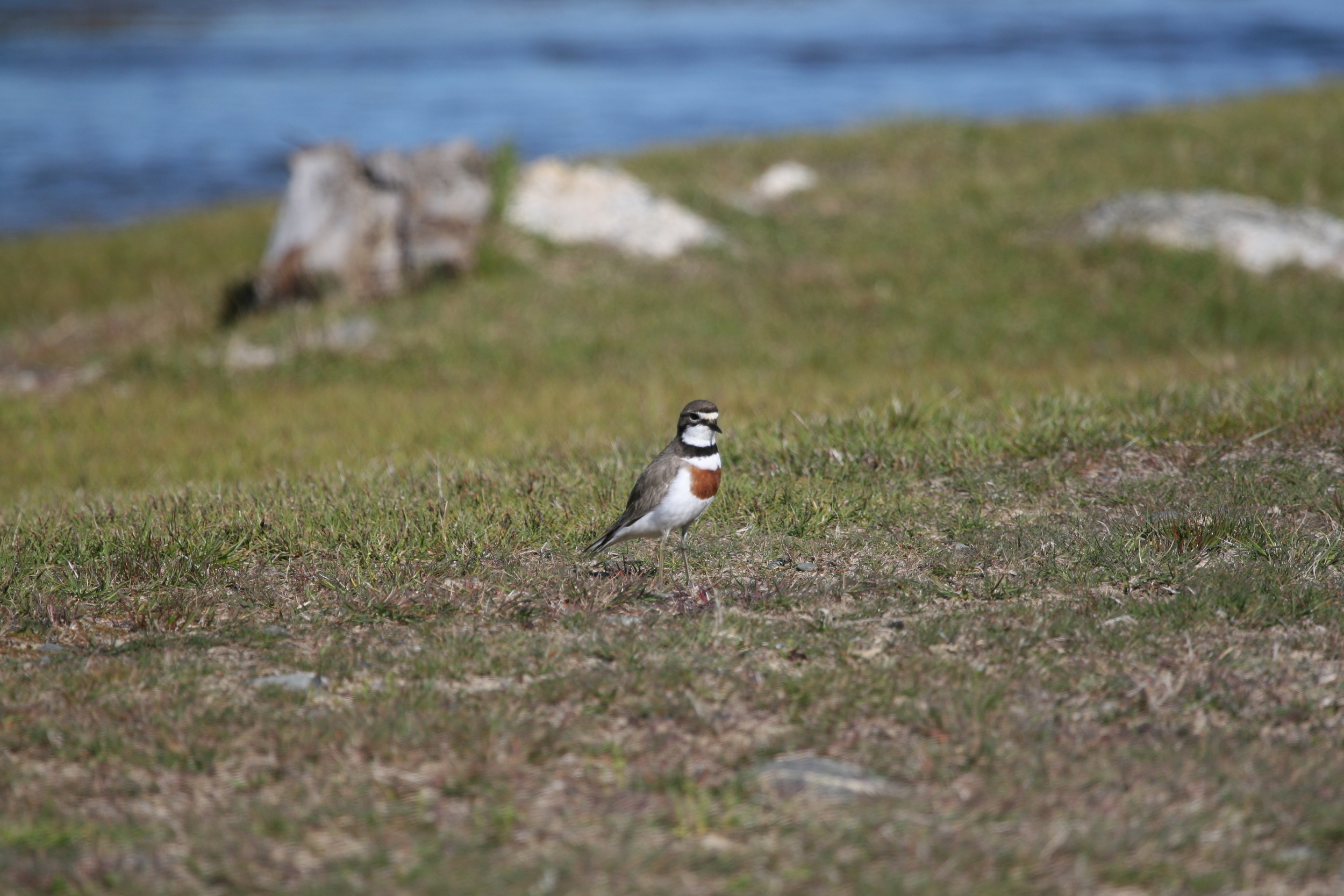
049 Lesser Sand Plover Charadrius mongolus
Although we dipped on Malaysian Plover on that 2010 trip to Palawan in the Philippines, our final morning was spent ata beach near Puerto Princesa (the local capital) were we had the chance to grill Greater and Lesser Sand-plovers and Kentish Plovers all in the same small high-tide roost. I had already ticked of Greater (see below) but these were the first Lesser I had unequivocally indentified. I have since found them in a few places, including Dubai and Thailand. The photo below is from my 2014 trip to Pak Thale in Thailand where this flock was very photogenic in the diffuse early morning light.
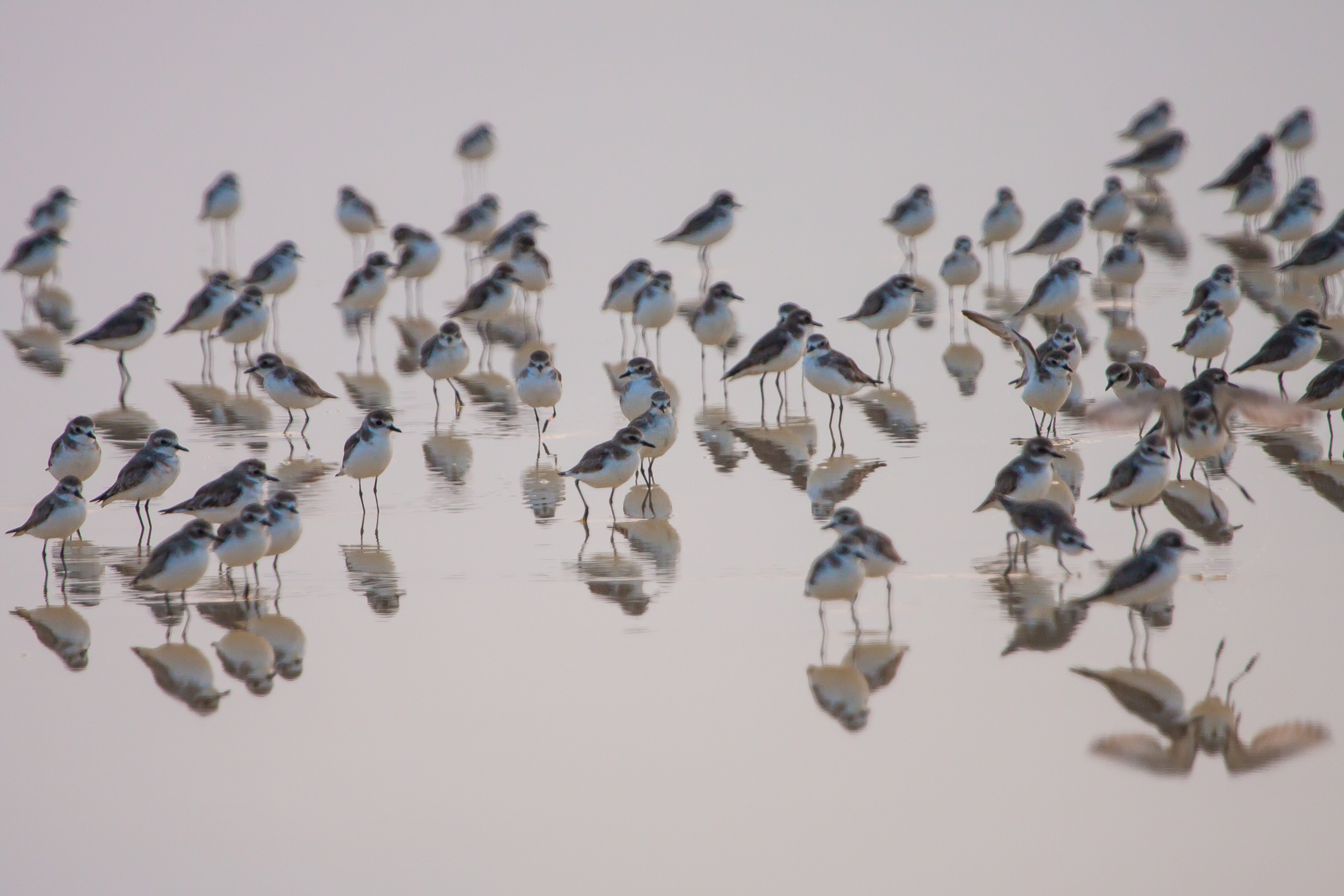
050 Greater Sand-plover Charadrius leschenaultii
If you’ve followed this blog from the start (and let’s face, why would you) you would know (so you probably don’t) that I first saw Greater Sand-plover in Cyprus in 2004. I was aware from my “Where to watch birds in Cyprus” that GSP are sometimes seen in spring on Lady’s Mile Beach so on my last morning I drove out to look. I was under some time pressure because I’d left Nikki looking after a baby and toddler, packing up our stuff for the airport later that day. Fortunately after some concerted searching I duly found this fellow, the only summer-plumaged GSP I have ever seen. All others have been overwintering birds, either in SE Asia or Australia. I have better images of a winter bird from Port Clinton on the Yorke Peninsula (just over an hour from Adelaide), but I like this digiscoped image because it shows my first.
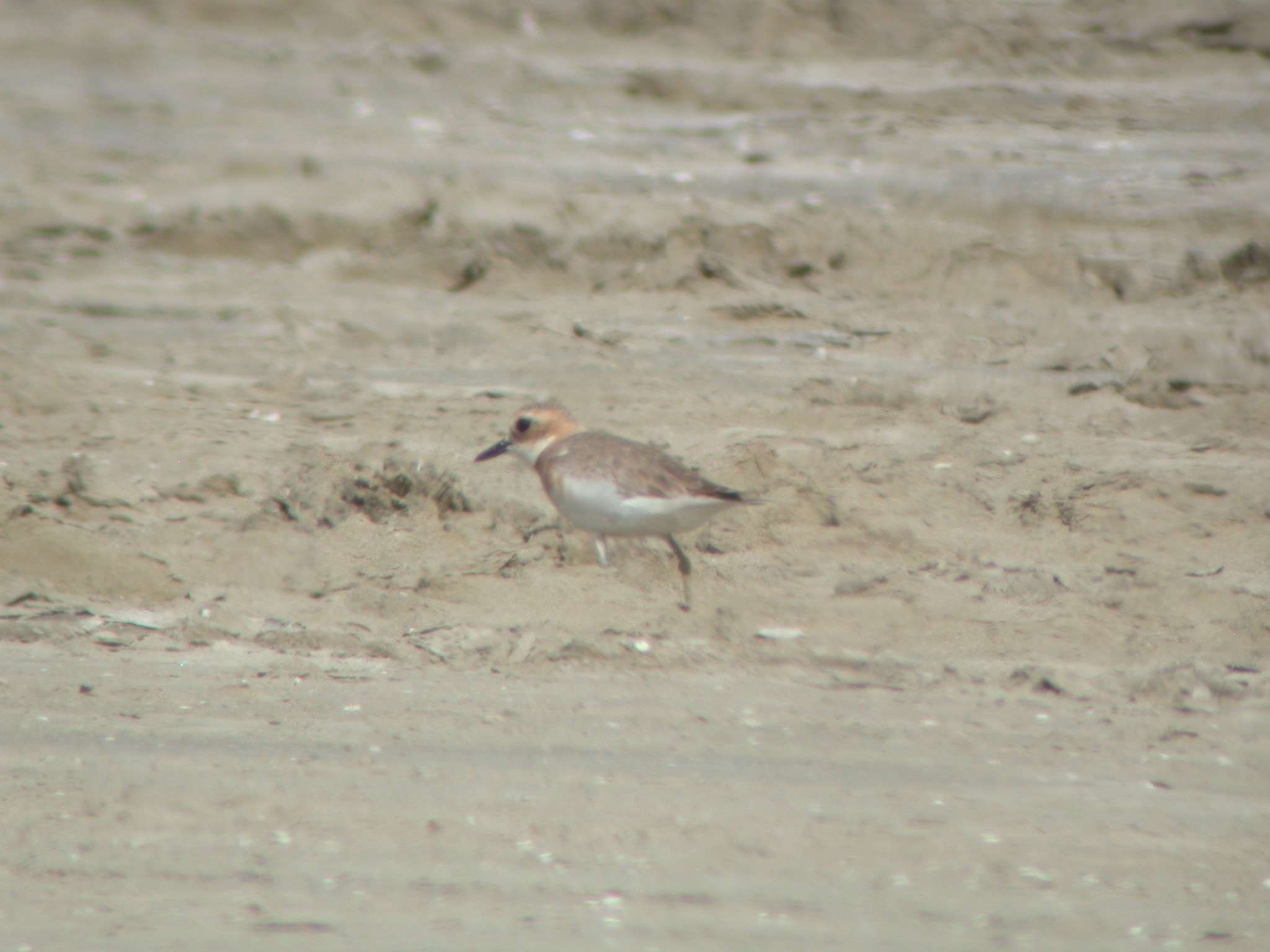
051 Caspian Plover Charadrius asiaticus
The age of digital photograph has changed birding markedly. It is now so cheap and easy to fire off shots of anything, identified or not, and check it later. I have now had some very memorable “back-of-camera” ticks, none more spectacular (or emabarrsing) than the evening at Henri Pittier NP in Venezuela when I reviewed the days photos and discovered a chestnut nape on a raptor that had seemed fairly nondescript through bins, so we had paid very little attention to it. It was, of course, Ornate Hawk-eagle, perhaps Steve’s most wanted bird from our first day in Venezuela.
I will get to the point – eventually.
This image is from my Dubai stopover in 2013, taken at the pivot fields about 20mins drove from the airport. It was my first stop after a 5am arrival. An area that is irrigated for crops and lawn in the middle of a desert is naturally a magnet for migratory birds that want something other than salt-marsh, sand-dunes or stony wadis. It duly delivered some excellent birding. I fired off pictures willy-nilly of waders, mostly White-tailed Lapwing (my main wader target for this site) but also Temminck’s Stint (see later). I thought this was a GSP and fired off record shots, and it was only once I was in Oxford at my conference meeting that I had a chance to go through pictures and I realised this was far too upright for GSP. Reference to my field guide and to some Dubai locals confirmed the ID as Caspian Plover. It is a rarity in Dubai, and had in fact been found two days after my visit by some locals. I had got there first to the find, but just not known it at the time.
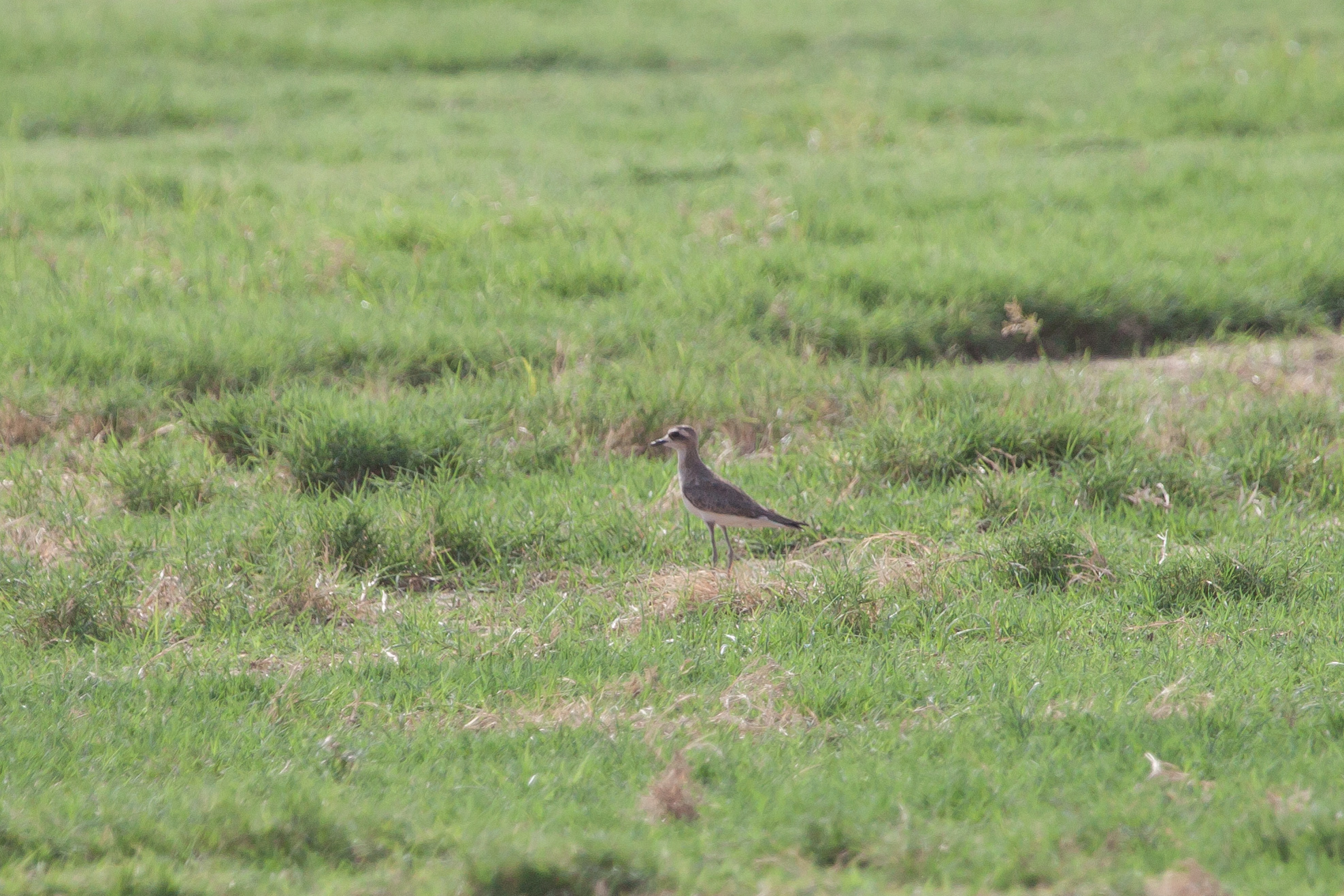
052 Eurasian Dotterel Charadrius morinellus
Arguably Europe’s most beautiful wader, it is a shame that I do not have an image of one. I saw my first (possibly my only) in my first weekend of UK birding on the north Norfolk coast (same trip as my first Pied Avocet, see 001-020). A Dotterel had been found by other birders and reported in the log at Titchwell Marsh, so Steve, Penny and I marched down to the beach and finally found it in the dunes. I don’t remember a lot about the experience otherwise, which is one of the down-sides of finding such a great bird early in my “career”, at a time when I was also ticking off Shelduck, Cuckoo and Lesser White-throat. It would be a dream to see a bird on its breeding grounds in the Highlands of Scotland or Scandinavia.
053 Mountain Plover Charadrius montanus
Back in the day, travel from the UK to the US was considerably cheaper if was over a weekend. This meant that every conference trip I did would typically need to include a Saturday night, meaning I just had to do some birding on the Saturday and Sunday after the conference was over. You do understand, I am sure. After the 2011 edition of CVPR in Colorado Springs I had visions of a mini “Chicken-run” (Colorado is outstanding in spring for lekking game-birds) but my research indicated I would be too late in the year for lekking action, and in many cases the site information is a closely guarded secret to avoid disturbance. I retrained my sights, then, on the Pawnee National Grasslands, about an hour north of Denver (so about 2 from my conference hotel) and had the morning and early afternoon to bird there before I had to be at Denver Airport for a flight back to London.
This was another fabulous self-guided day in a beautiful area. The clichéd Colorado scenery is of the rockies, but the grasslands are a different habitat and hold a different beauty. They are a remnant of pre-agricultural days, flat, rich grassy plains of the mid-west with a backdrop of the snow-covered mountains, and literally filled with larks and sparrows and their song. My main targets were McCown’s and Chestnut-collared Longspurs (I found both) but I was also keen for Mountain Plover and had been tipped off about a likely site by some local birders I was in touch with. The whole day I saw very few people, but as I approached the place my info said was good for Mountain Plover I nervously discovered some of the locals exercising their 2nd amendment rights. Braving stray bullets and cows, I duly located a superb Mountain Plover.


1 Comment
Comments are closed.